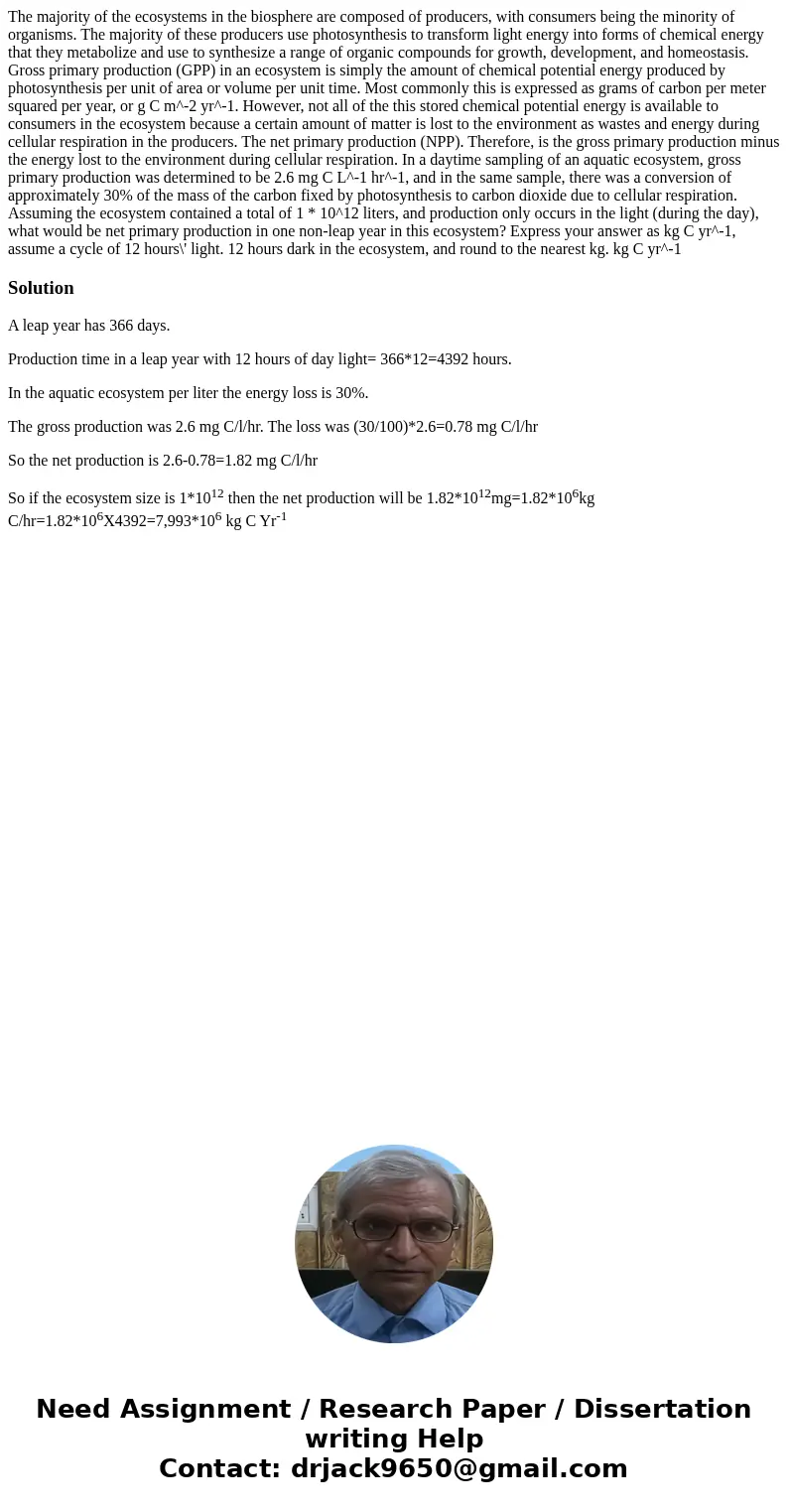The majority of the ecosystems in the biosphere are composed
The majority of the ecosystems in the biosphere are composed of producers, with consumers being the minority of organisms. The majority of these producers use photosynthesis to transform light energy into forms of chemical energy that they metabolize and use to synthesize a range of organic compounds for growth, development, and homeostasis. Gross primary production (GPP) in an ecosystem is simply the amount of chemical potential energy produced by photosynthesis per unit of area or volume per unit time. Most commonly this is expressed as grams of carbon per meter squared per year, or g C m^-2 yr^-1. However, not all of the this stored chemical potential energy is available to consumers in the ecosystem because a certain amount of matter is lost to the environment as wastes and energy during cellular respiration in the producers. The net primary production (NPP). Therefore, is the gross primary production minus the energy lost to the environment during cellular respiration. In a daytime sampling of an aquatic ecosystem, gross primary production was determined to be 2.6 mg C L^-1 hr^-1, and in the same sample, there was a conversion of approximately 30% of the mass of the carbon fixed by photosynthesis to carbon dioxide due to cellular respiration. Assuming the ecosystem contained a total of 1 * 10^12 liters, and production only occurs in the light (during the day), what would be net primary production in one non-leap year in this ecosystem? Express your answer as kg C yr^-1, assume a cycle of 12 hours\' light. 12 hours dark in the ecosystem, and round to the nearest kg. kg C yr^-1
Solution
A leap year has 366 days.
Production time in a leap year with 12 hours of day light= 366*12=4392 hours.
In the aquatic ecosystem per liter the energy loss is 30%.
The gross production was 2.6 mg C/l/hr. The loss was (30/100)*2.6=0.78 mg C/l/hr
So the net production is 2.6-0.78=1.82 mg C/l/hr
So if the ecosystem size is 1*1012 then the net production will be 1.82*1012mg=1.82*106kg C/hr=1.82*106X4392=7,993*106 kg C Yr-1

 Homework Sourse
Homework Sourse